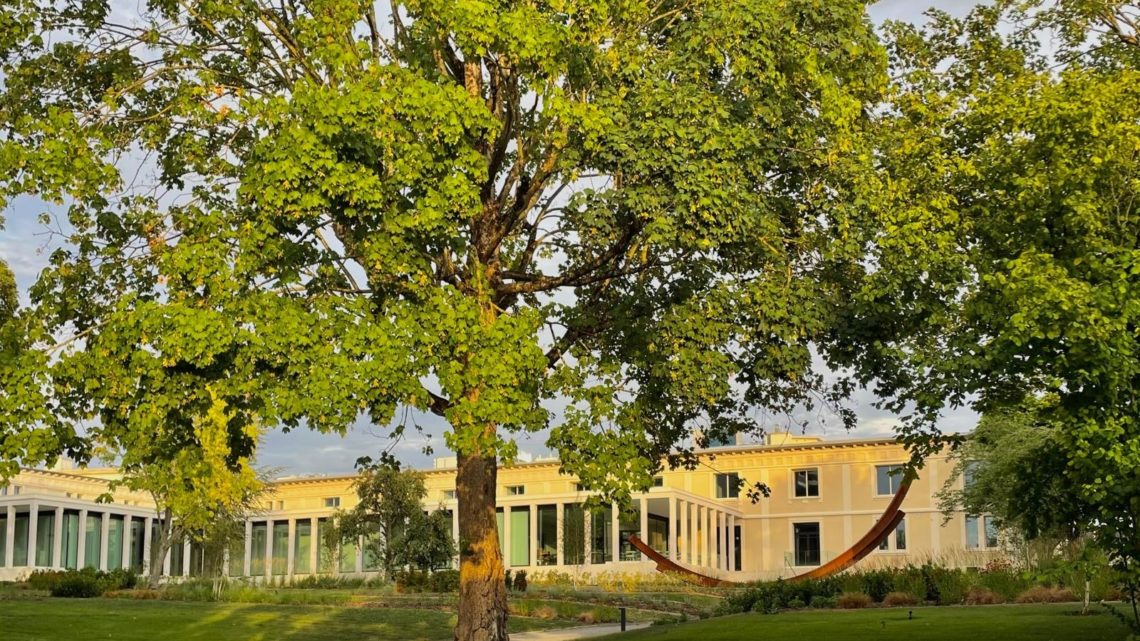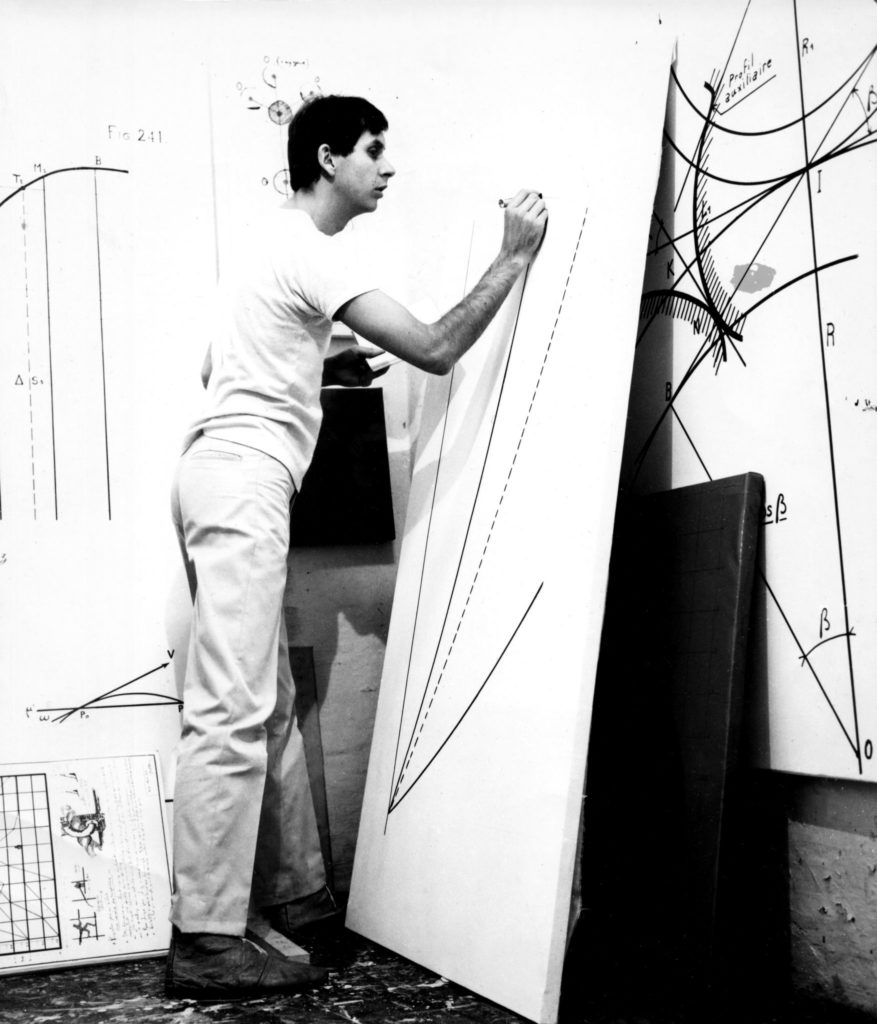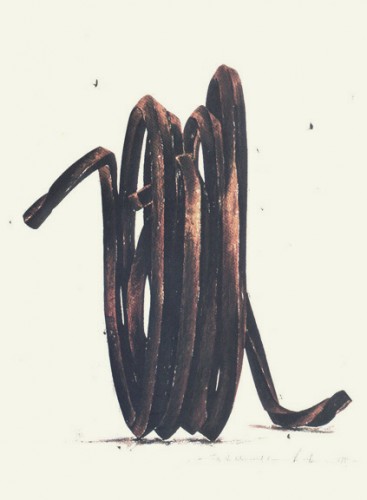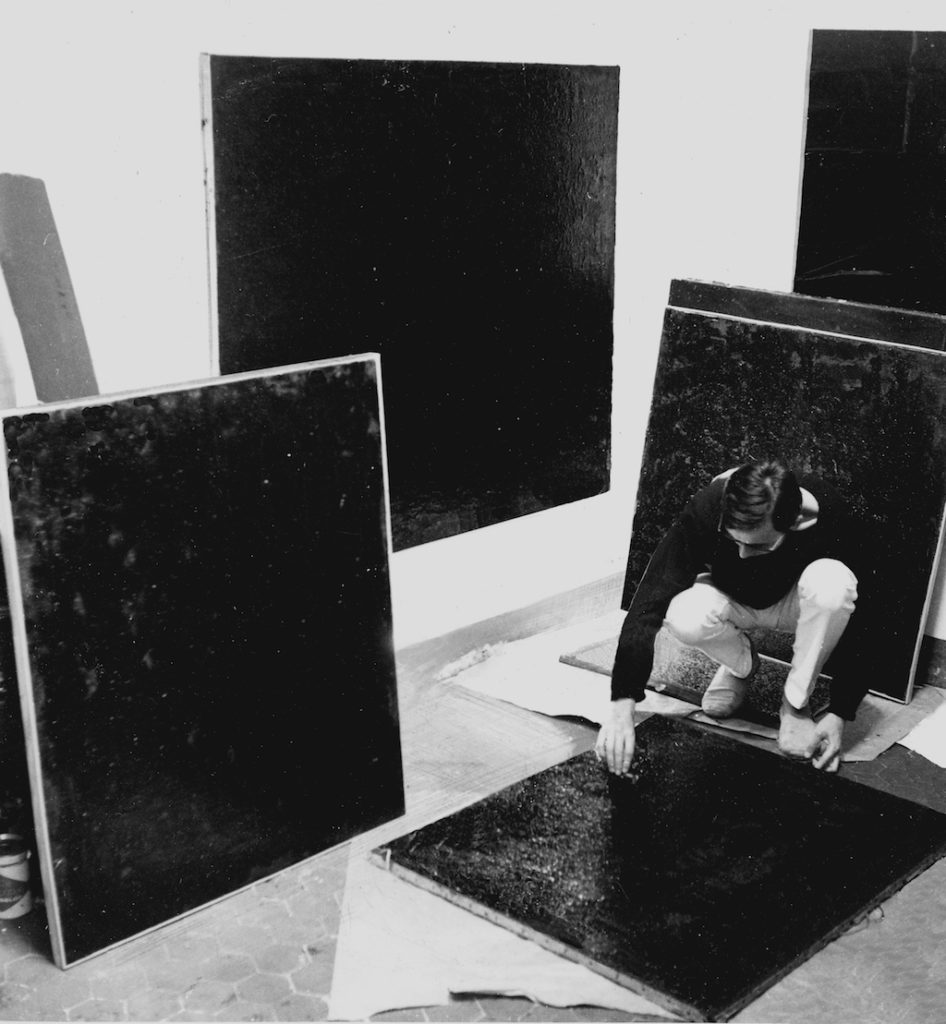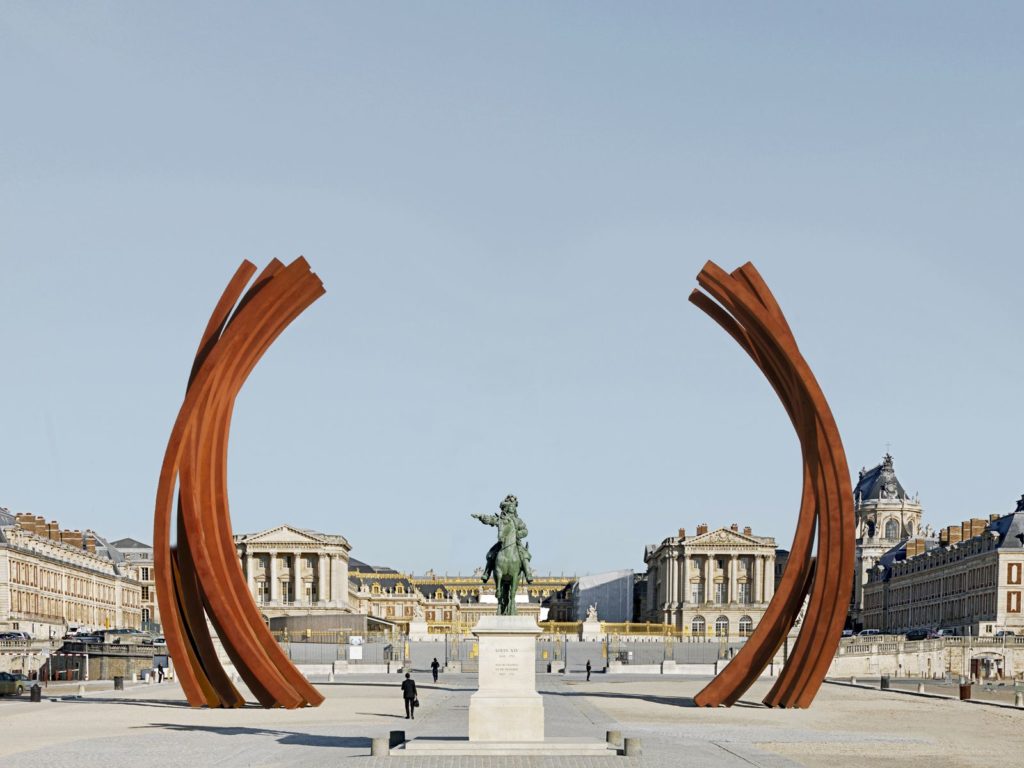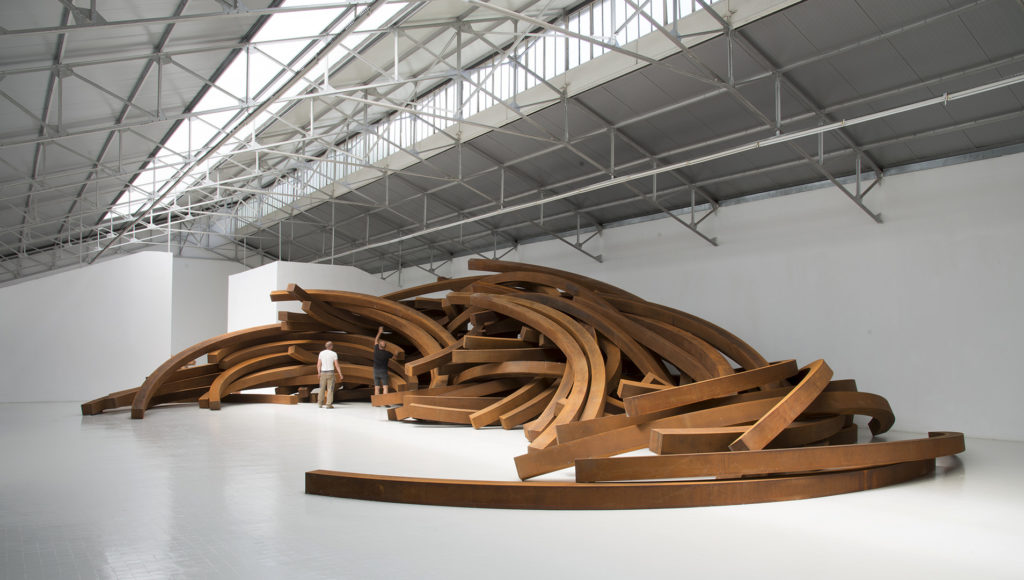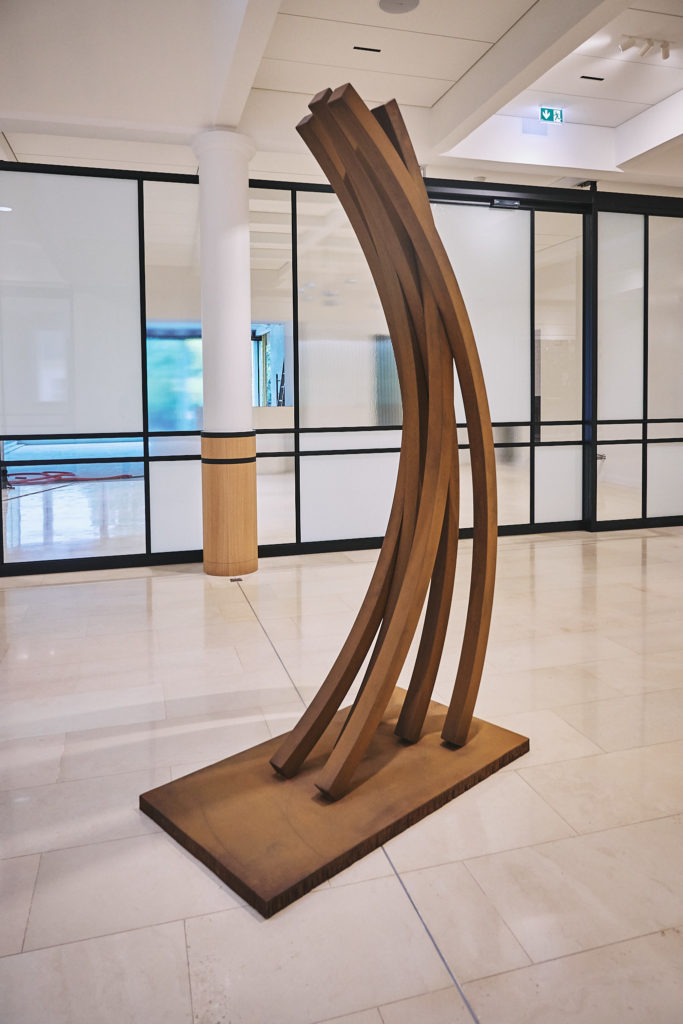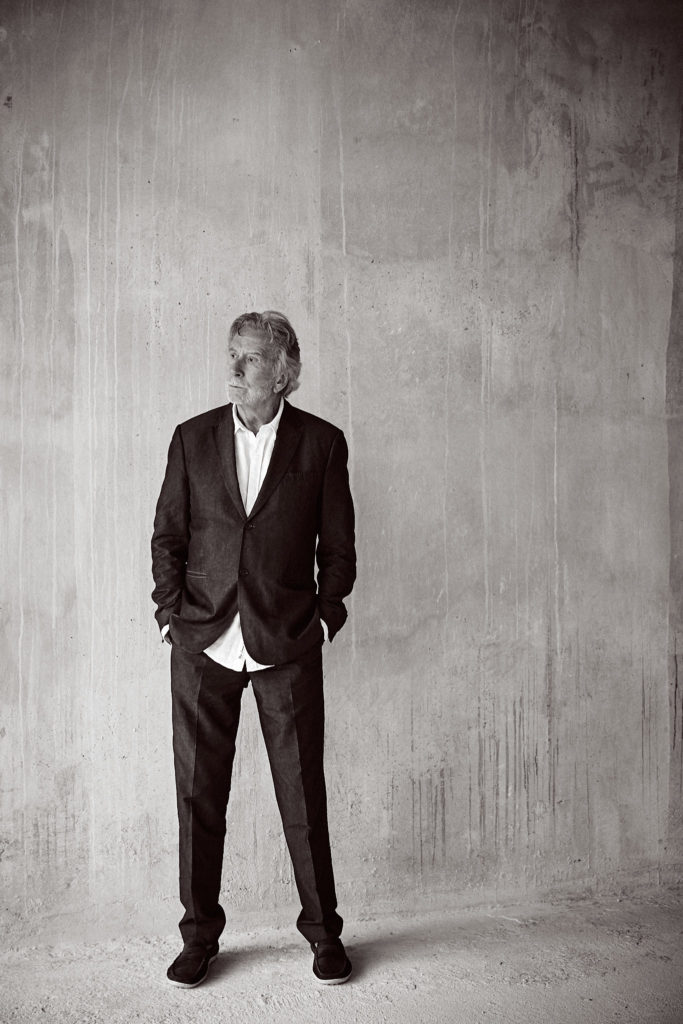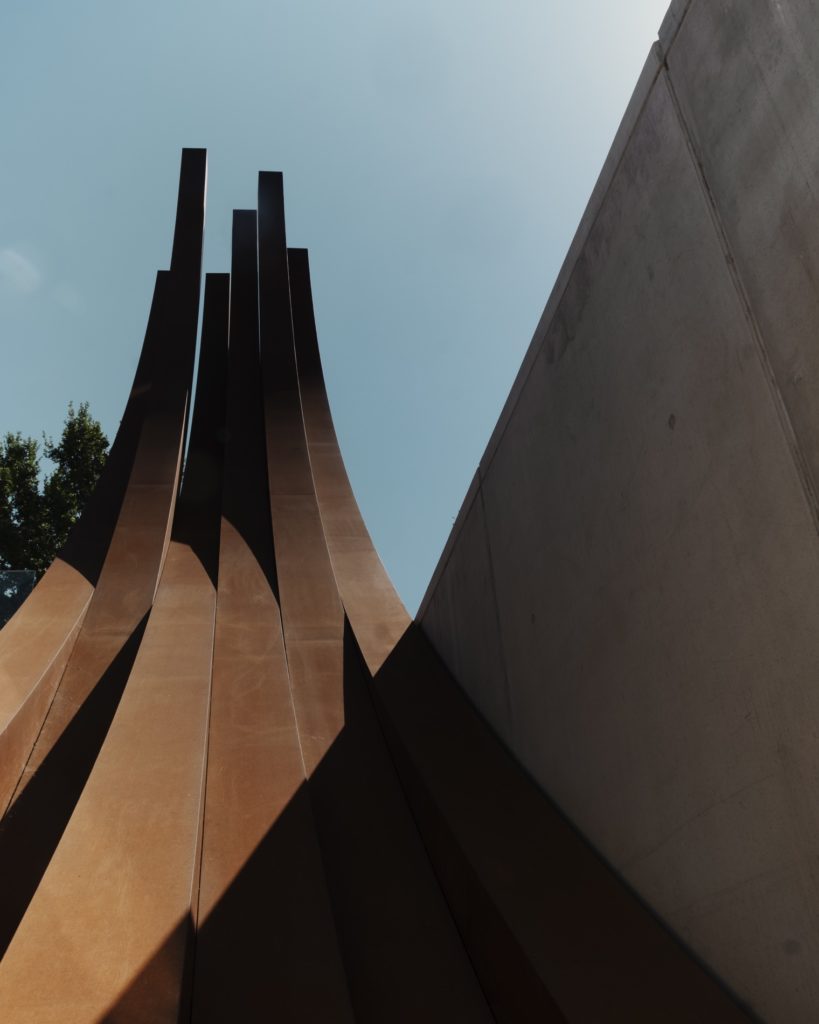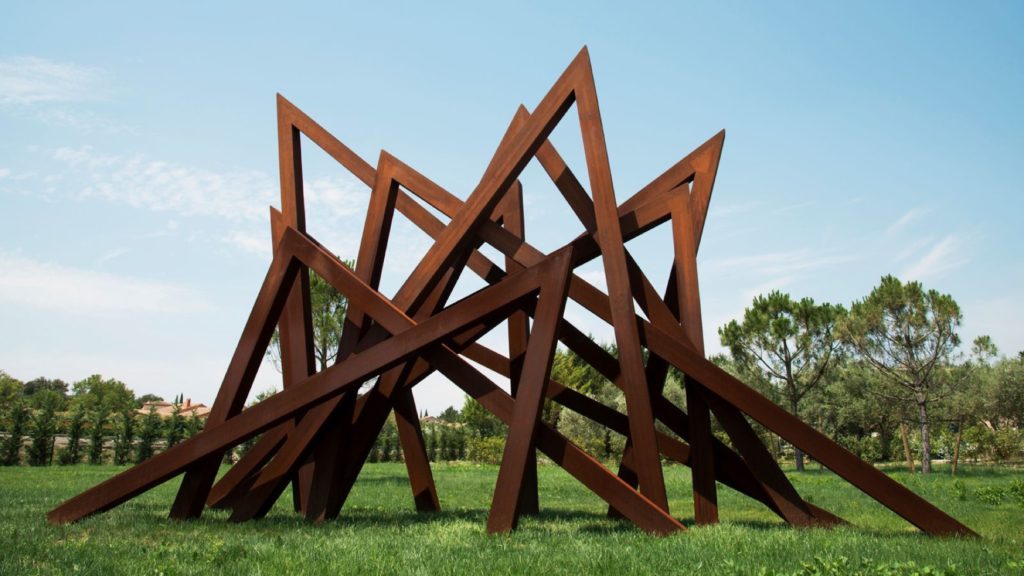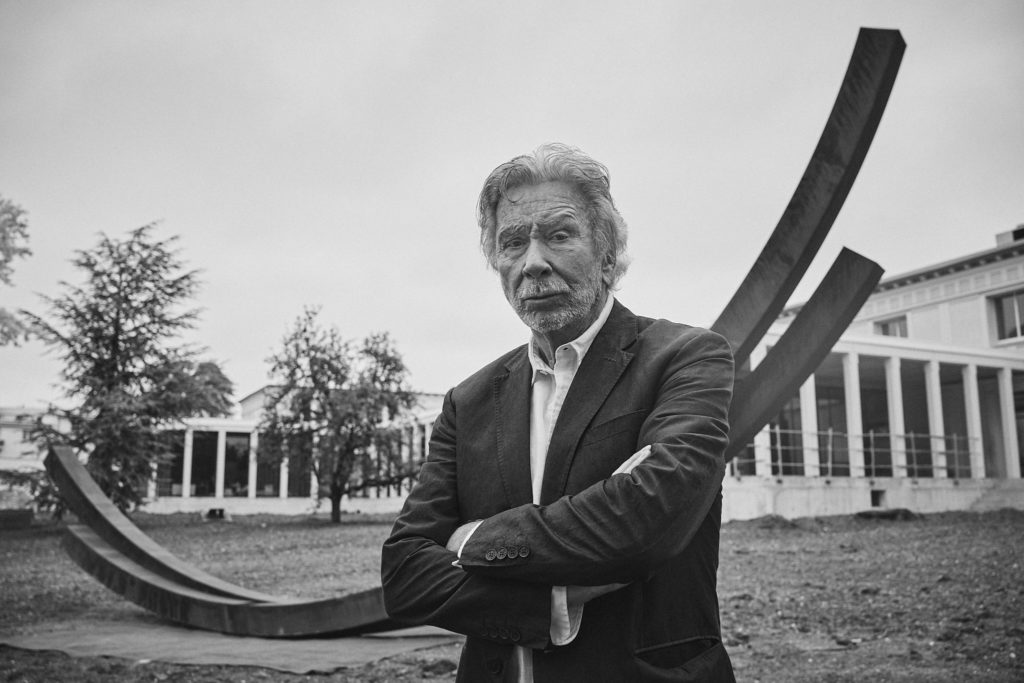In the redesigned grounds of Maison Taittinger and within its building stand two corten-steel sculptures. These arcs are the work of Bernar Venet, a pioneer of conceptual and minimalist art.
Internationally renowned, Venet’s works can be found in over a hundred prestigious institutions around the world. However, although he is an artist, he is also a promoter of his artistic ‘family’. For him, art is nothing less than an absolute that helps our consciousness evolve.
As part of the redesign of its Saint-Nicaise site, Maison Taittinger invited Bernar Venet to create two sculptures. Now fully visible to the public, these works belong to the artist’s emblematic Arcs series. The first, installed in the park, rises to 12 metres; the second, standing 2.38 metres high, is positioned at the entrance of the building, which has been entirely reconfigured to offer a new visitor experience. Respectively titled 97.5° Arc x 2 and 85.5° Arc x 6, in reference to the curvature of their angles, the sculptures bear intentionally technical names. This choice leaves space for personal interpretation—just as the works themselves, through their formal rigour, carry a striking evocative power.
Formal rigour has been a constant in Bernar Venet’s work, taking shape as early as the 1960s, when he left his native France (Alpes-de-Haute-Provence) to settle in the United States, attracted by the emerging minimalist scene. From there, he has created an ever-changing body of work that is avant-garde, radical and conceptual.
Very early on, he rejected subjective expression. He prefers abstraction: equations, diagrams, angles and arcs. He turns shapes borrowed from scientific language into visual art objects. In his monumental steel sculptures with themes such as ‘Arcs’, ‘Angles’, ‘Indeterminate lines’ and ‘Collapse’, he seems to explore the tension between order and chaos. Unpredictability is of the greatest importance here: “I don’t have any idea what the work will look like when it’s finished” he admitted in an interview (Art Interview, 2019). His installations make their presence felt in urban or natural spaces. His lines and curves rise, sometimes collapse, and always question… gravity, the human level, the force of the laws of physics.
Today, Bernar Venet is undoubtedly one of the most internationally recognised French artists. His work graces collections at the MoMA and Guggenheim in New York, in the Pompidou Centre in Paris and even in the National Museum of Modern Art in Seoul. He is also one of the very few contemporary artists to have exhibited at Versailles, in 2011.
Venet embodies a form of intellectual rigour, combined with raw materiality. For him, sculpture is not there for decoration; it forces the eyes to confront abstraction, in its purest and most physical form. The Venet Foundation located in Le Muy, in the Var department, is a living example of this. It was designed as a place of dialogue between the surrounding nature, art and thought.
We will feature this in a future article as we were lucky enough to visit this private institution, which brings together a huge variety of big names in conceptual and minimalist art, making it one of the greatest museum institutions in the world.

